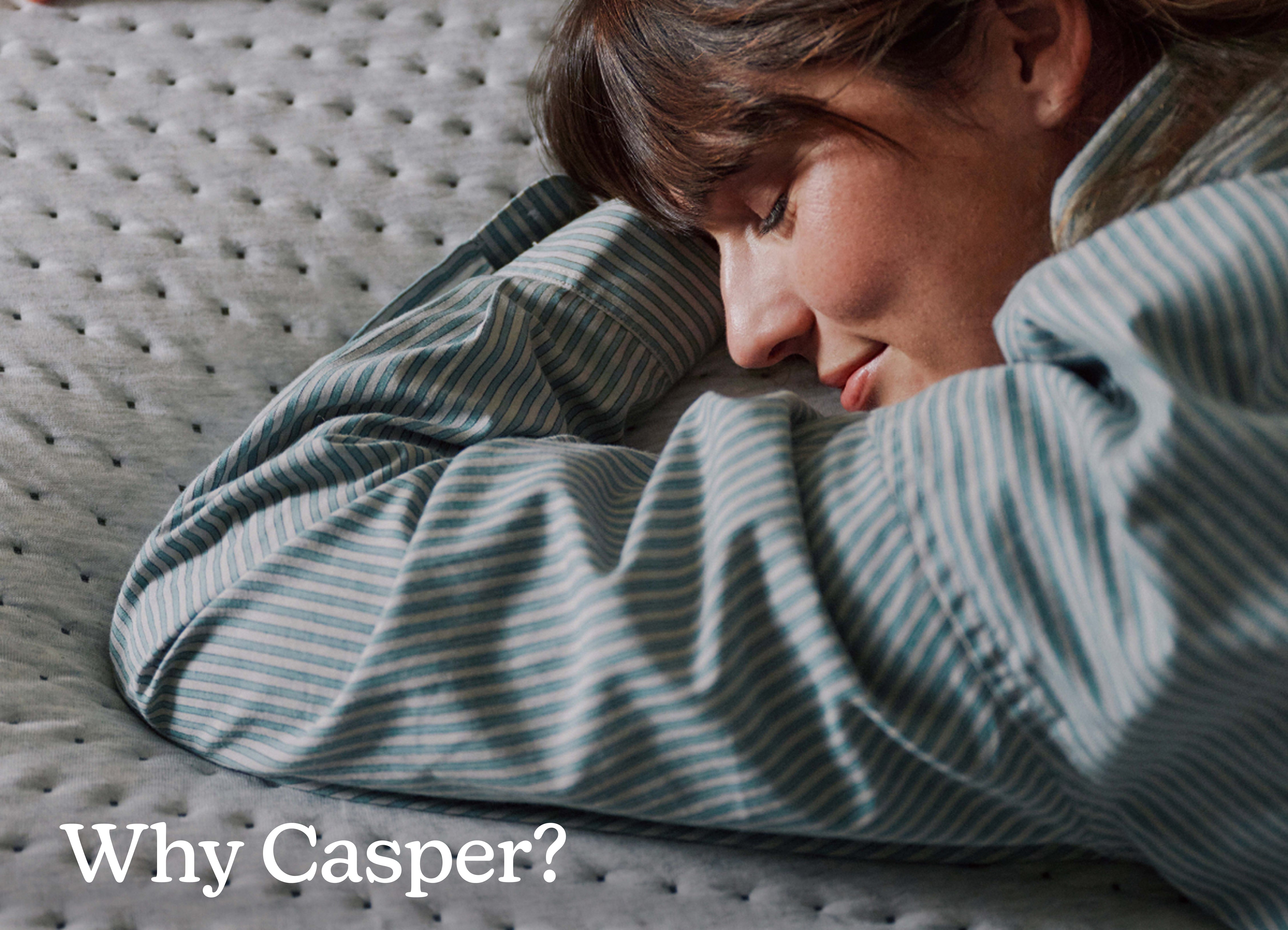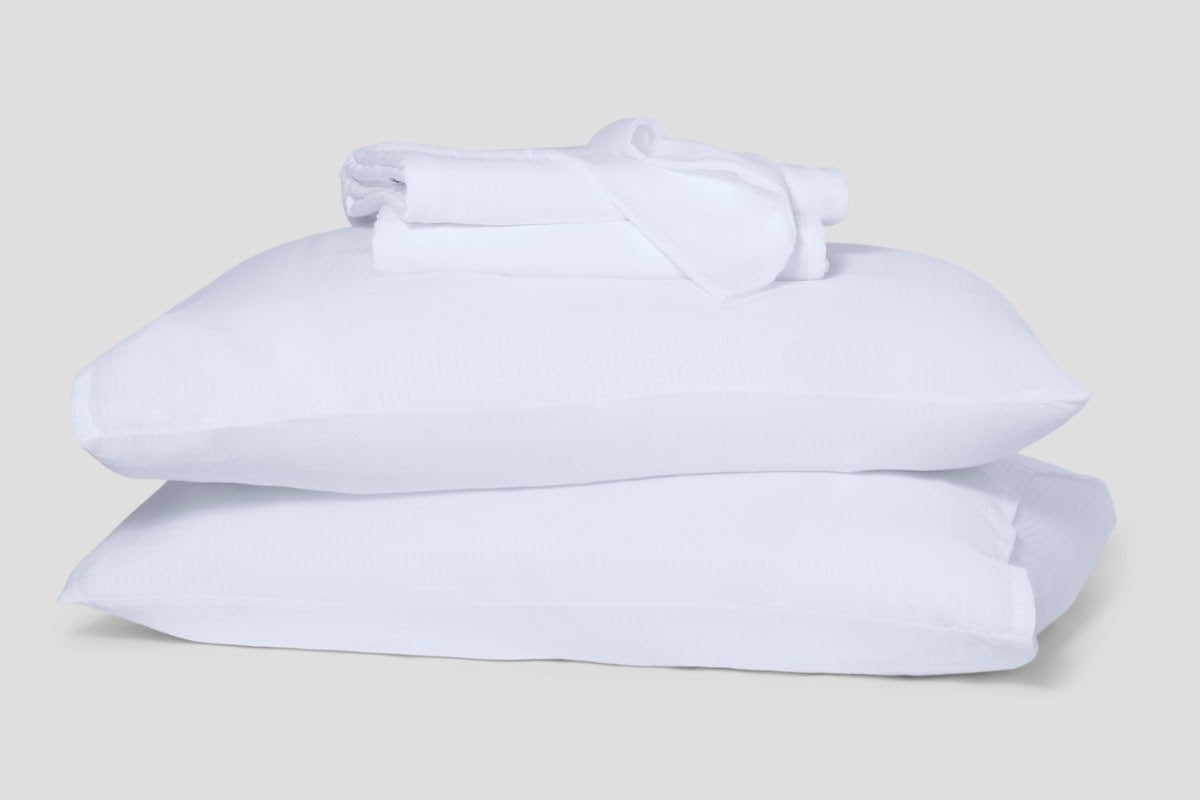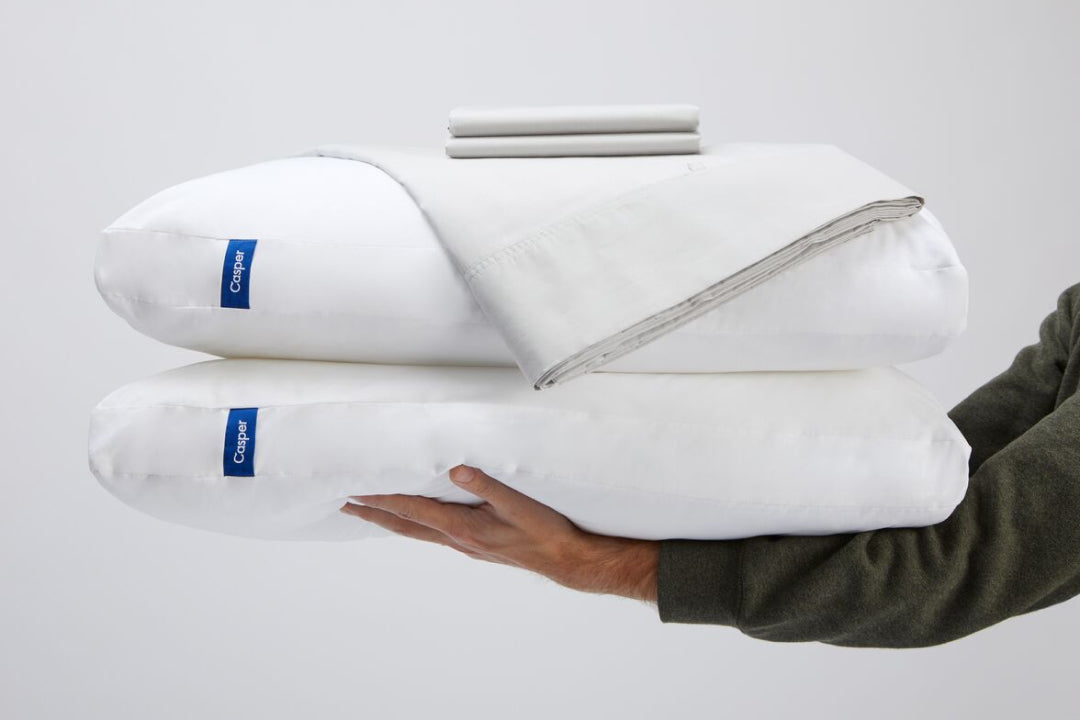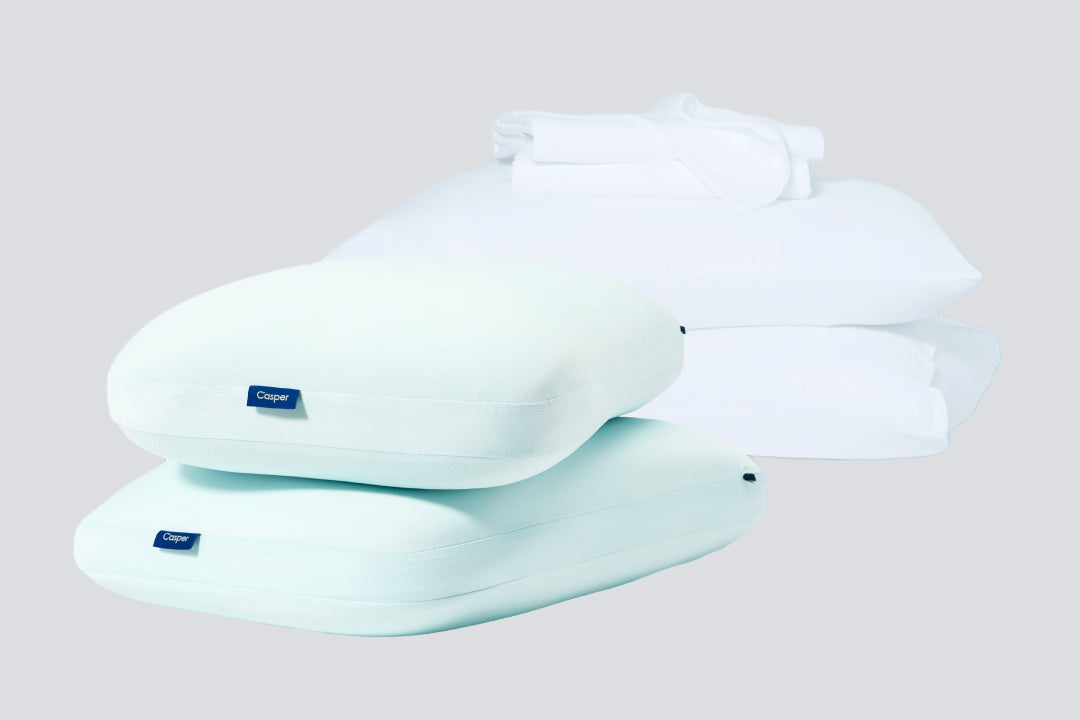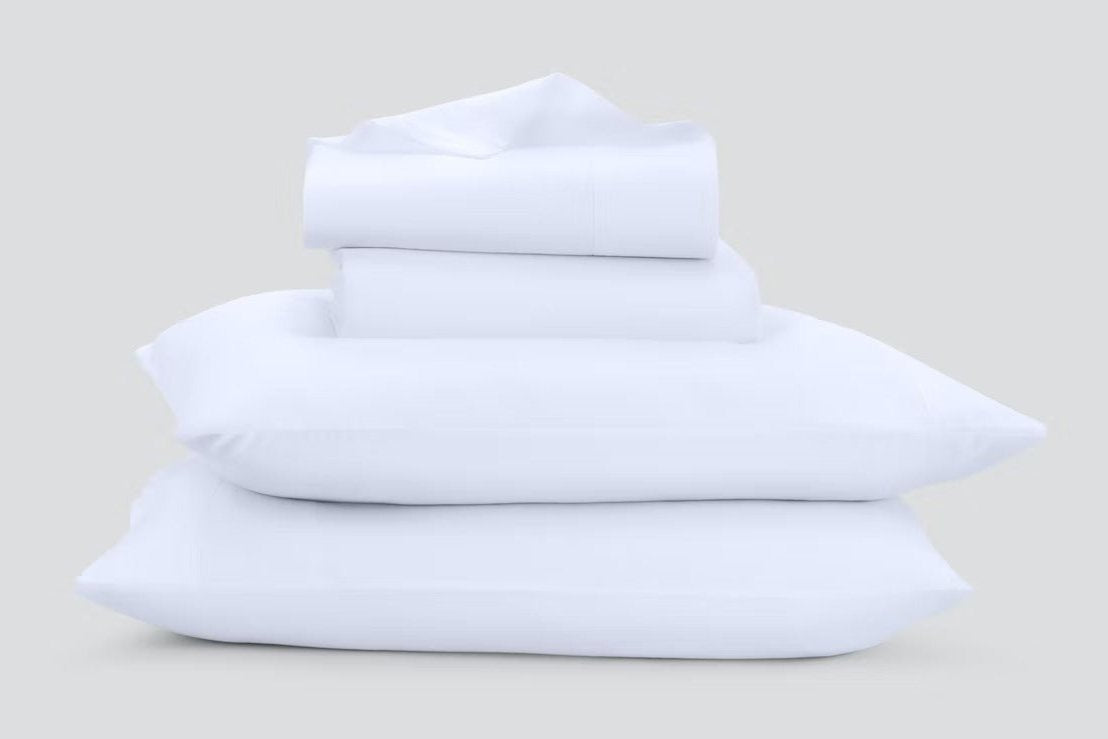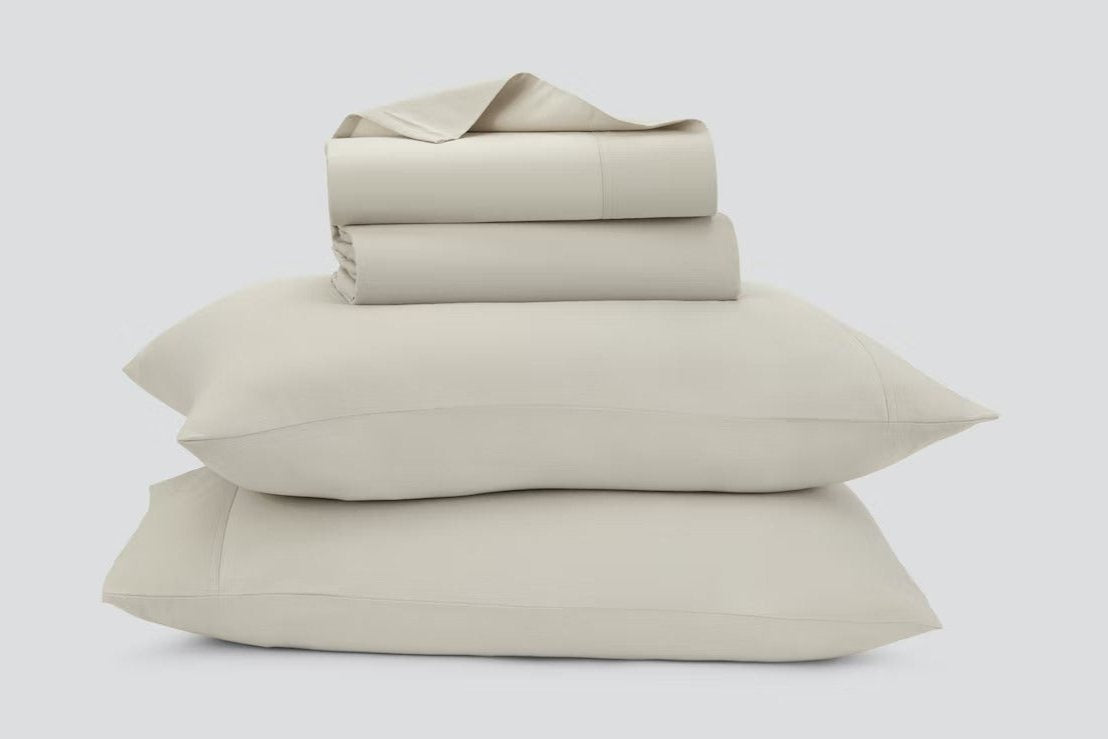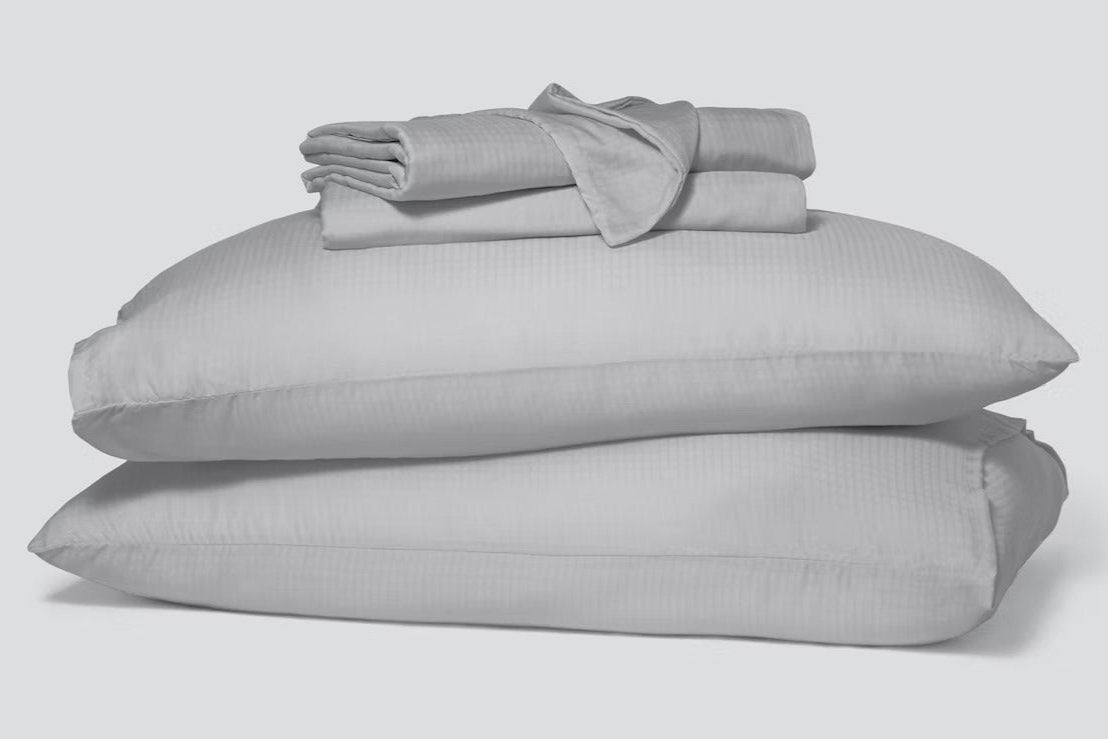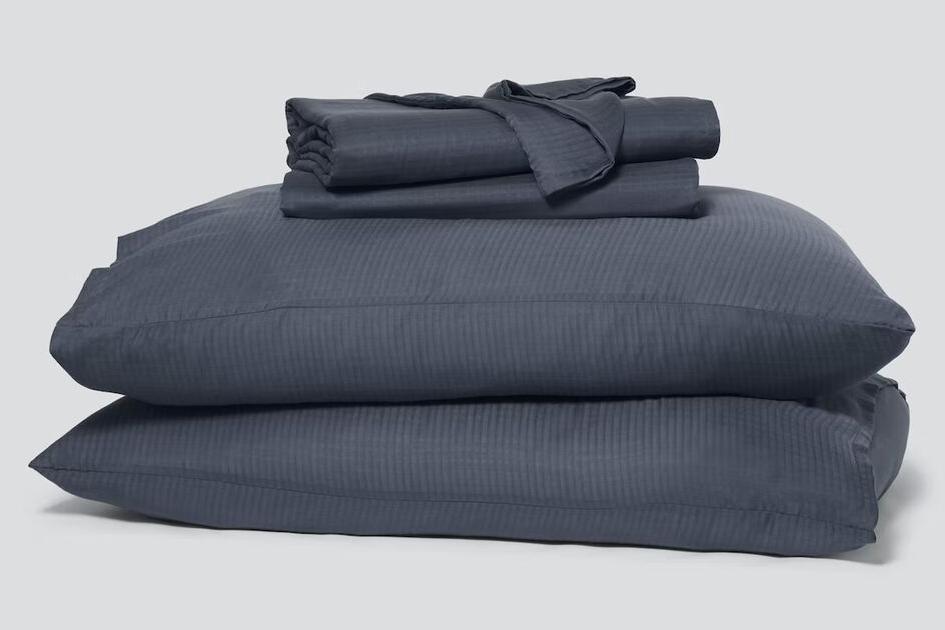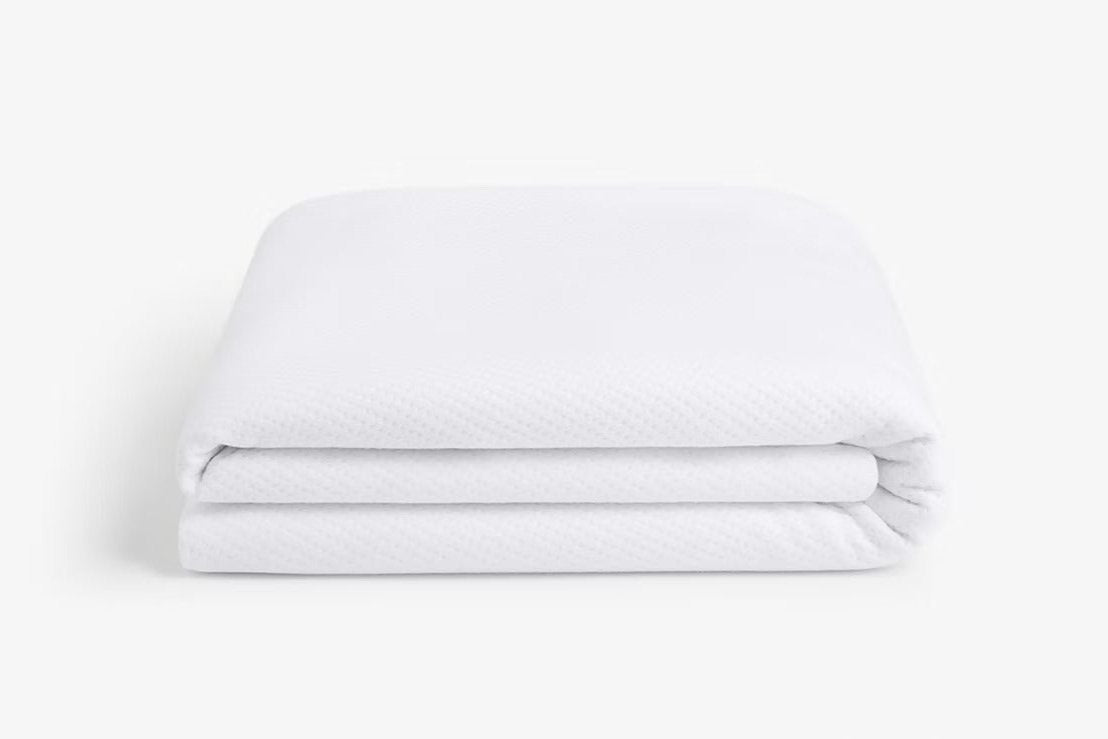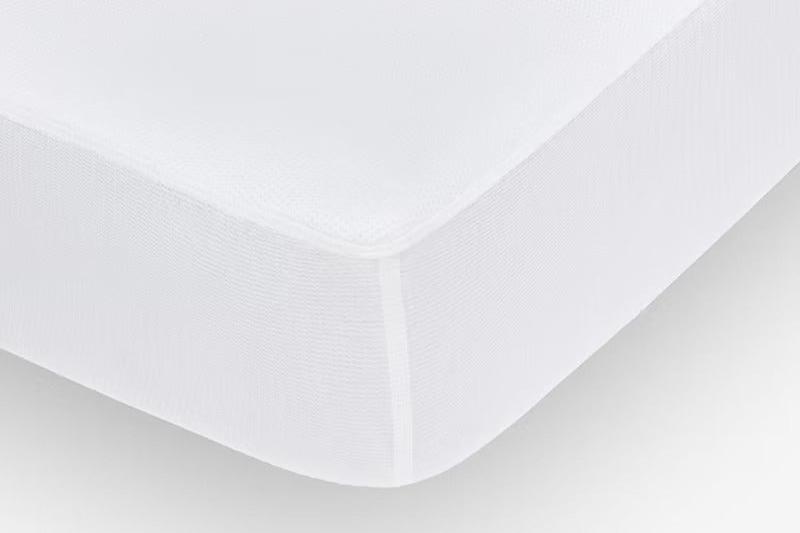What are the softest sheets made out of? Some of the more popular materials include linen, cotton, and tencel. Tencel and cotton are two of the most common materials found in the average person’s bed sheets. These two titans of sleep are designed to be comfortable, lightweight, and durable (three things you usually want out of bed sheets).
While both of these fabrics can lead to a great night’s sleep, there are some key differences between the two. Price, production, and variety are some of the biggest factors that separate Tencel sheets vs. cotton sheets.
Simply put, though, the main difference between Tencel and cotton is that Tencel fiber has a soft, silky, and breathable feel while cotton is a cozier option.
Of course, everyone’s nighttime preferences are different—so let’s dive in and learn everything there is to know about Tencel vs. cotton from how they are made to their unique benefits.
Whether you prefer Tencel fabric or organic cotton, Casper has you covered with both. Our premium bed sheets come in TENCEL™ Lyocell or cotton fabrics, each designed for unique sleeping preferences.
What is Tencel?

First up on the docket: The illusive Tencel. But, what are Tencel sheets?
Tencel is a major player in the bed sheet game, but many people aren’t as familiar with this material as they are with cotton. There are two main reasons for this underrepresentation of Tencel sheets:
- Naming – Tencel fibers often aren’t advertised as—well—Tencel. This is because Tencel fibers can be made from various materials, like eucalyptus tree or Beachwood. Companies typically use these terms to identify their Tencel products or another name entirely. The best example we can think of? Casper’s Hyperlite cooling sheets. Although it may not be in the name, these cool, breathable sheets are made from 100% TENCEL™ Lyocell fibers.
- Price – Tencel production requires a few more steps than cotton, leading to slightly higher prices when shopping for this type of bedsheet. Of course, it’s important to note that Tencel fibers use less water and energy than most cotton varieties, making them more eco-friendly in several cases.
Now that we’ve cleared that up, we can talk about the specifics.
How are Tencel fibers Made?
Tencel fibers are made by dissolving wood pulp with a chemical solvent. Once dissolved, the pulp is squeezed through small holes in order to produce threads. Finally, these threads are dried through “spinning,” and 99% of the solvent used is recycled.1
So, what do fabrics made with Tencel feel like? Well, it depends on these two common varieties:
- Tencel lyocell – Lyocell is the most popular form of Tencel used in bed sheets. The texture of Tencel lyocell is soft, airy, and fairly similar to cotton. If you’re wondering if Tencel is breathable, you’re in for a treat. Tencel Lyocell is also known for its moisture-wicking properties—making it a great option for sweaty sleepers who prioritize breathability when selecting sheets.
- Tencel modal – Typically made from Beachwood pulp, Tencel modal is more of a silky material. While Tencel modal offers a softer texture, it does not offer the same level of breathability and may not work for those who sweat during the night.2
What is Cotton?

Next, we’ll be giving you the 411 on good, old-fashioned cotton bed sheets. Cotton has been a popular fabric throughout history due to its durability, soft texture, and high moisture resistance. Cotton sheets are made by spinning fibers from the cotton plant into a weave. A quality set of cotton bedsheets will typically have a thread count between 200-400, although the type of cotton used can make a difference, as well.
There are three main varieties of cotton that are used to produce bed sheets. The main difference that sets these types of cotton apart is their individual fiber (or staple) length. Let’s take a look at the options:
- American Upland – American Upland is a traditional and versatile style of cotton. The staples for American Upland cotton can range from short to mid-length. This makes for a soft, but not too silky texture when woven into bed sheets.
- Pima – Pima is the other type of cotton grown in the United States. Pima cotton is notably silkier than American Upland, due to its long staple length.
- Egyptian – Egyptian cotton is typically the most expensive of the three for two reasons: import costs and general softness. Egyptian cotton can only be grown in the Nile Valley River, making it more difficult to obtain in the United States. This type of cotton also sports particularly long staples, which lend to its soft, luxurious texture.3
While the type of cotton used in your sheets can make a difference, the main factor you’ll want to consider is the weave. Whether picking out a flat sheet vs. fitted sheet or both, cotton bed sheets come in a variety of weaves and knits, but the most common options include:
- Flannel – Flannel is the warmest weave you’ll find among cotton bedsheets. Not only are flannel sheets particularly thick, but they’re also created with a unique brushing technique that pulls bits of fiber to the surface. This is what contributes to the flannel’s cozy feel.
- Twill – Similar to denim, twill is a diagonal weave that provides a sturdy quality. Although less commonly found in bed sheets, twill can be softened over time and create a warm, durable texture.
- Sateen – Sateen is a lightweight, silky weave used to mimic the feel of satin. Sateen sheets are wrinkle-resistant, lustrous, and great for sensitive skin. Those who want this silky feel will love Casper’s 100% cotton Sateen bed sheet set.
- Percale – Percale is one of the most lightweight and breathable cotton weaves. This material will resemble Tencel the closest while maintaining the durability of cotton. Hot sleepers who prefer cotton will rest comfortably on Casper’s Percale Sheets4.
While Tencel is generally a more eco-friendly material and a sustainable fiber, cotton is also natural, hypoallergenic, and a great option for comfortable, reliable bed sheets. It is also a sustainable material. Deciding between these two fabrics will ultimately come down to minor details.
What is the Difference Between Tencel and Cotton?

Okay, so we’ve covered each material separately—but how do they stack up against one another? And which one do you choose to cover your mattress?
Tencel and cotton are similar fabrics, but each one certainly has its own unique qualities. It’s important to consider your preferences when it comes to bed sheets in order to choose the right fabric for maximum comfort. Let’s take a look at the key differences between each article of bedding:
- Variety – The feel of your bed sheets is not only determined by their material but also the weaving pattern used to create them. Tencel typically comes in the silkiest thread patterns. Cotton, on the other hand, can come in both silky and non-silky varieties. Rougher knits like twill and jersey may be preferable for some people.
- Washing – Cotton tends to withstand pretty much anything you throw at it. This makes cotton sheets easier to wash than Tencel. From the high temperature to the rough spin cycle, a set of cotton sheets will hold up well when laundered in a standard washing machine and dryer. Tencel sheets require a more delicate method of laundering in order to keep them in good condition.
- Softness – Tencel sheets may be preferred by people who crave softness from their bedding. While cotton sheets are known to get softer over time, Tencel sheets are going to provide ample softness straight out of the package.
- Warmth – Tencel is both lightweight and breathable, making it an ideal option for hot sleepers. While some cotton varieties are comparable to Tencel in terms of temperature, others tend to trap heat more easily. For this reason, hot sleepers may prefer Tencel and silkier varieties of cotton. Cold sleepers will benefit from the comfort of thicker cotton sheets, like flannel.
- Price – Some brands may charge more for Tencel sheets, due to the complex process of producing this material. Fortunately, our Casper Hyperlite and Percale sheets are the same price, so you can feel free to choose based on your comfort—not your budget.
Is Tencel Better Than Cotton?
Is Tencel better than cotton bedding? Depends on your preference.
At the end of the day, both Tencel and cotton are quality fabrics that contribute to a restful night’s sleep. They’re also more sustainable than synthetic fiber. The fabric that will work best will depend on several personal preferences related to laundering, warmth, and eco-friendliness.
Who Should Choose Tencel?
We recommend Tencel sheets for people who struggle with sleeping hot. If you find yourself waking up in a pool of sweat each morning, this breathable article of bedding is going to keep you cool and comfortable throughout the night. Tencel sheets are also a bit more eco-friendly than cotton, as they require less water and energy to be produced.
Who Should Choose Cotton?
Cotton is a tried and true fabric that works for many people. If you’re looking for variety in terms of knits and a bit more warmth throughout the night, cotton is going to be your best friend. Cotton’s durability also makes it easier to wash on a weekly basis, while Tencel is going to require a more delicate laundering process. Keep in mind that how often you’ll need to buy new sheets depends on not only fabric durability, but also how well you care for your linens.
Both materials are going to provide comfort and wick away moisture the way synthetic fabrics cannot. At the end of the day, you really can’t go wrong with either of these lightweight materials. Whether you opt for Tencel or cotton, it is important that you understand how to fold sheets, as well as how to properly store them to help maintain the structure of the material.
Casper: The Secret to a Comfortable Night’s Sleep
Now that you know what most sheets are made of, the next question you need to ask is, “How often to buy sheets?” Whether you’re looking for cotton or Tencel, Casper has a comfortable set of sheets for everyone. Our Percale and Sateen sheets are made from 100% cotton and come in every size from twin to California King.
For the Tencel fans, don’t worry—we’ve got you covered, too. Our Hyperlite Sheets are designed to give you a cool, sweat-free experience without sacrificing coziness. Made with a unique grid weave, these sheets will have you feeling rested and refreshed every morning.
Finding the right sheets can be tricky, but we’re here to simplify the process. Start getting the sleep you deserve – with Casper!
Sources:
- Good on You. Material Guide: What is Tencel? https://goodonyou.eco/how-ethical-is-tencel/
- Sleep Foundation. Tencel vs. Cotton Sheets. https://www.sleepfoundation.org/bedding-information/tencel-vs-cotton-sheets
- Martha Stewart. How to Choose Cotton Sheets. https://www.marthastewart.com/270671/choosing-cotton-sheets
- PimaCott. Cotton Weave Types. https://www.pimacott.com/cotton-guide/cotton-weaves







